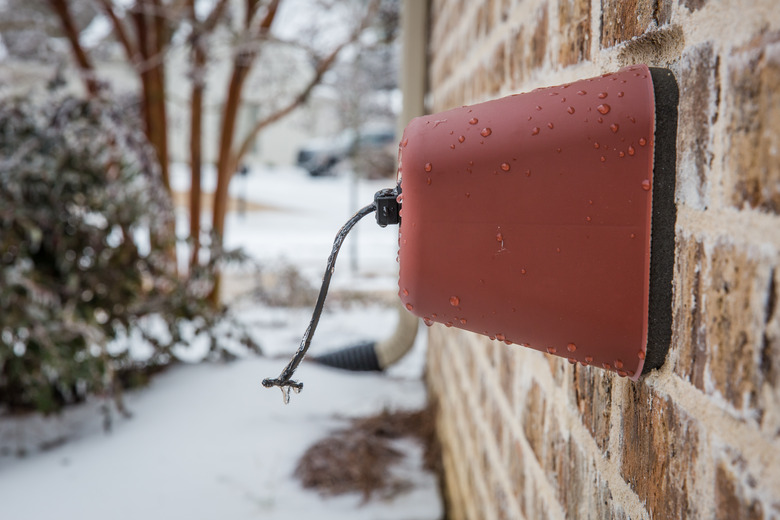My Outside Faucet Froze
We may receive a commission on purchases made from links.
A frozen outdoor faucet could lead to big, expensive problems indoors. A faucet on the outside of your house connects to a pipe that connects to the other pipes inside your home. When the air temperature drops below freezing, any water left in the pipe connected to that faucet may freeze and expand, potentially causing pipes to crack or burst within your walls. Because thawing and fixing frozen pipes inside your home can be a difficult task — and burst pipes are an expensive mess — a frozen outside faucet needs to be addressed.
Thawing a Frozen Faucet
Thawing a Frozen Faucet
When you notice ice coming from the spout of an outdoor faucet, there are a few things you can try to speed up the melting process. First, open the faucet completely so water can flow out as it thaws.
The quickest strategy is to use a hair dryer or heat gun to blow hot air all around the frozen faucet (not making contact with the faucet itself) until the water melts. Or tightly wrap rags around the faucet and pour hot water over it to soak the rags. (Don't pour hot water directly onto frozen pipes since the sudden temperature shock could cause damage.) Pour more hot water over the rags every few minutes until the ice is melted.
If you notice any changes to your water pressure at indoor faucets, find puddles on floors, hear unusual sounds from your pipes, or your water has an odor or color, these are signs that a pipe has already burst. Call a plumber right away.
Preventing Future Freezing
Preventing Future Freezing
Preventing frozen outdoor faucets is pretty simple. At the start of winter, detach any hoses that may be attached to outdoor faucets. Close the water shut-off valve leading to the faucet; it may be located on the interior wall where the faucet is installed. This stops water from flowing to the outdoor faucet.
Installing an outdoor faucet cover is also an easy way to protect your faucet from freezing temperatures, especially if you're unable to locate or access the shutoff valve. If you live somewhere with harsh winters, invest in a waterproof fabric faucet cover that you can use again and again.
Installing a Frost-Free Faucet
Installing a Frost-Free Faucet
People unfamiliar with plumbing might not realize there are several types of outdoor faucets that are commonly installed in homes. If you live in a climate cold enough for your current faucet to freeze over, it might be worth swapping out the fixture for one that's designed to be resistant to freezing. A frost-free or freeze-proof outdoor faucet works using a longer pipe than a standard faucet, which has a compression valve at the far end of the spigot that keeps water from flowing in when the spigot is closed. The pipe extends far enough into the house that any water flowing through the home's pipes is protected from freezing outdoor temperatures.
Installing a frost-free faucet is fairly simple but may require a plumber's help. Your existing plumbing setup will determine what kind of sill cock (aka outdoor faucet) you need to buy. For example, if your plumbing system uses welded pipe connections, you'll need a frost-free sill cock with sweat connection. A plumber can tell you what kind of fixture is appropriate.
